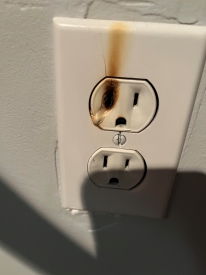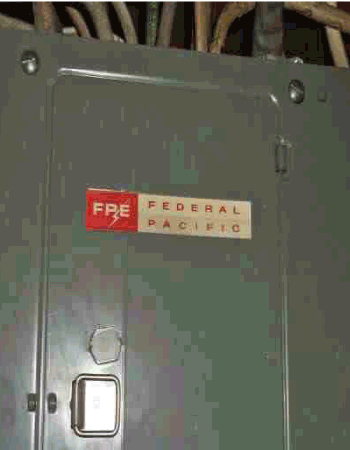
September 2024
By: Josh Walejewski
Read Time: 3 Minutes
When was the last time you thought about your home’s electrical panel? If you’re like most homeowners, it’s probably been a while—if ever. But what you don’t know about that unassuming box in your basement or garage could be putting your home and family at serious risk.
In this blog, we’ll explore how electrical panels work, the dangers of aging systems, and why now might be the time to consider an upgrade.
What Exactly Does an Electrical Panel Do and How Does it Work?
An electrical panel, often referred to as a breaker box, fuse box, or service panel, is the central hub of your home’s electrical system. It’s essential for distributing power throughout your home and protecting you from electrical hazards.
Here’s how it works:
Power Distribution: Its main function is to route incoming electricity from the grid to the circuits that power your lights, outlets, and appliances throughout your home.
Circuit Breakers or Fuses: Inside the panel, you’ll find circuit breakers or fuses. These act as safety devices that “trip” or shut off if a circuit becomes overloaded or if a short circuit occurs. This helps prevent electrical fires, damage to your appliances, and electrical risks.
Main Breaker: The electrical panel contains a main breaker that controls the flow of power to the entire home. If this switch is turned off, all electricity in your home is cut off. Each smaller circuit breaker controls a specific area or appliance in your home, allowing you to manage power to different parts of the house individually.
Safety and Control: The panel is not only a safety measure but also a way to maintain control over your home’s electricity. It lets you safely cut power to specific circuits when doing maintenance or repairs and protects your home by cutting power during dangerous conditions, like a short circuit.
By understanding what an electrical panel does and how it operates, homeowners can better appreciate the importance of keeping this critical system in good working condition.

Signs Your Electrical Panel Needs an Upgrade
- Frequent circuit breaker trips
- Flickering lights
- Burning smells
- Scorch marks near outlets
- Your panel is more than 25-30 years old
- Dimming lights when high-load appliances are in use
- Your older panel has fuses rated for higher amperage than the wiring can handle. For example, previous owners may have replaced a 15-amp fuse with a 20- or 30-amp fuse. This creates a fire hazard by overloading the wiring.
Panels that MUST be Replaced ASAP
If your home was built between the 1950’s – 1980’s, we highly recommend checking to see if your home’s electrical panel was part of a 2002 class action lawsuit. The lawsuit mostly involved 3 electrical panel manufacturers: Federal Pacific, Zinsco, and Wadsworth Bryant & Bull Dog Panels.
Federal Pacific Stab-Lok Electrical Panels
 Federal Pacific Electric (FPE) was a leading provider of electrical panels in the United States, with millions of units installed in homes from the 1950s to the 1980s.
Federal Pacific Electric (FPE) was a leading provider of electrical panels in the United States, with millions of units installed in homes from the 1950s to the 1980s.
FPE panels are notorious for faulty circuit breakers, often failing to trip during a short circuit or electrical overload. When this happens, electricity continues to flow unchecked, causing overheating and, in many cases, fires.
Some reports have even indicated that circuits in the “off” position still carry power. Therefore, creating the risk of electrocution for anyone working on what they believe to be a disconnected circuit.
Check your panel for “Federal Pacific” or “Stab-Lok” labels and replace it as soon as possible if found.
Zinsco Panels
Akin to Federal Pacific Electric panels from the 1950s to the 1980s, Zinsco panels are also known for their inability to trip. In the event of a short circuit or electrical overload, these panels often fail to disconnect power from the affected circuit. This failure is dangerous on its own, but the presence of aluminum wiring in Zinsco panels amplifies risks.
When a Zinsco doesn’t trip, the excess current can cause the aluminum wiring to overheat, melt, and fuse to the metal bus bar. Once this happens, the breaker becomes incapable of tripping — even in the presence of severe electrical issues. This leads to excessive heat buildup and increases the likelihood of an electrical fire.
If your home or building is still using a Zinsco panel, you might want to go buy a lottery ticket. Consider yourself extremely fortunate if you haven’t experienced a fire yet. This is one situation where it’s unwise to test your luck any further.
Wadsworth Bryant & Bulldog Panels
During the 1950s, Wadsworth Bryant and Bulldog electrical panels were commonly installed across the United States. However, as with the other panels on this list, Wadsworth panels have since been identified as a significant fire hazard due to their aluminum wiring and lack of grounding.
Like the other two panels, the major concerns is their failure to trip when circuits are overloaded. This leads to overheating and hazardous situations.
Property owners have also reported difficulty in determining the status of breakers, as there’s no clear indicator when a breaker has tripped, making them problematic to use.
If your building or home is still equipped with the panels listed above—or any panel from the 1950s era—it’s critical to have it replaced by a licensed electrician as soon as possible to ensure the safety of both the building and its occupants.
Benefits of Upgrading Your Electrical Panel

Safety & Peace of Mind
As we’ve discussed, dated panels pose safety risks including electrocution and electrical fires. In addition to enhanced safety, an upgraded panel gives you peace of mind that your home, family, pets, and belongings are protected.
Compliance with Modern Electrical Codes
Older panels may not meet current electrical codes. Causing safety concerns and increased insurance premiums.
Additionally, out-of-code panels could present problems if you try to sell your home. A home inspector will likely discover your dated service panel. Potential buyers may lose interest in your home, ask for a reduced price, or ask that the electrical service be rectified before moving forward with the sale.
The Electrification of Homes
In past blogs, we’ve discussed the electrification of home heating and cooling. However, the electrification of homes extends beyond comfort and brings the need for increased electrical capacity. Older, lower amperage panels won’t be up to the task of meeting the electrical demand of modern, electrified homes.
A panel upgrade will future-proof your home. Allowing it to support equipment and devices such as heat pumps, electric vehicle (EV) chargers, dryers, stoves, and water heaters.
Closing Thoughts
Ensuring your home’s electrical safety isn’t just about keeping the lights on—it’s about protecting everything that matters most. As our home’s reliance on electricity grows, making sure your panel can handle the demand is more important than ever.
By upgrading, you’re not only safeguarding your home but also enhancing its value, gaining peace of mind, and knowing your electrical system is prepared for whatever the future may bring.
Read more blog posts from Kettle Moraine Heating & AC.
About the Author
Josh Walejewski
Josh is a professional marketer who has worked in the HVAC industry since 2017. With a Bachelor of Applied Arts and Sciences Degree (B.A.A.S) in marketing and sustainable business management from the University of Wisconsin, he has a passion for all aspects of HVAC, business, marketing, and environmental stewardship.





